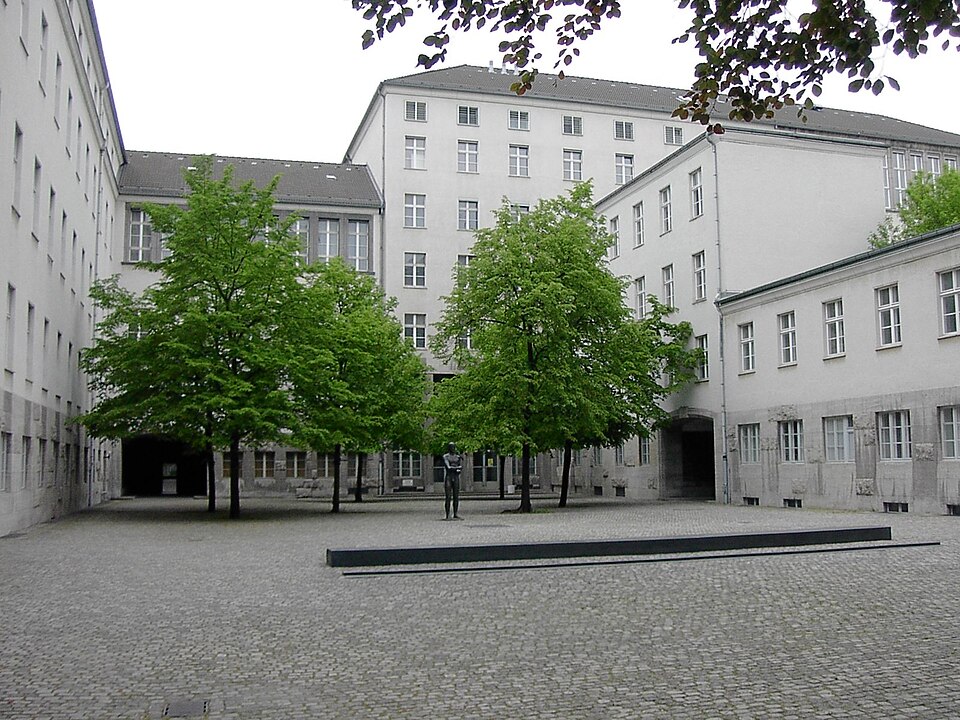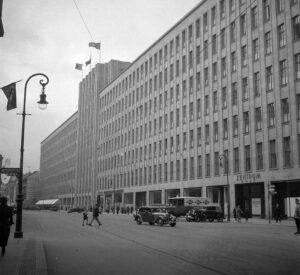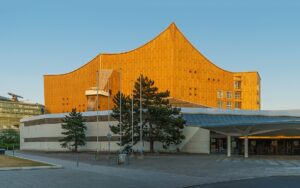Berlin attracts seekers, and many of those who visit the German capital come in search of the past. They come to understand this city of contrasts and perhaps to connect what happened «then» with things that still matter today. Berlin is full of places from which you can sit and contemplate these things, but few locations are quite as evocative as the site of today’s German Resistance Memorial Museum, located in a former military headquarters building on today’s Stauffenbergstraße 13 – 14.

By Adam Carr at English Wikipedia – Transferred from en.wikipedia to Commons.Original text: Photo by en:User:Adam Carr, May 2006, Public Domain, Link
History vs. The Past: Understanding Their Differences
Ask yourself the following question. What is the difference between the meanings and assumptions underpinning the words «history» and the «past?» How do you understand the difference in the subtle differences between these two apparent synonyms?
For many people, the words are just two different ways of saying the same thing. But I think the differences between them is what makes travel in Berlin so interesting. For me, we can consider all that factually happened to be «the past.» The past is just a potentially endless list of things that factually took place. «History» by contrast is an action. It’s what we do with what happened in the past. It’s the taking of facts from the past and crafting a narrative that suits us today, in some way or other. History is an interpretation, a sensibility to both the facts of yesterday and the needs of today. You might can that the past cannot be changed, yet history is changed all the time.
Visiting the German Resistance Memorial: A Reflection on History
I remember heading to German Resistance Memorial one cold and snowy evening some years ago. There was nobody about, and the century-old Imperial era military headquarters building was lit only by a few lamps. A handful of stark memorials declared that in this courtyard some of the conspirators involved in the famous July 20, 1944 assassination plot against Hitler, were executed after the failure of their attempt to kill Hitler in East Prussia. Chief among those plotters, and one of those killed in that quiet courtyard, was a key conspirator, one Colonel Claus von Stauffenberg.
I remember standing in front of the memorial for a while, trying to picture what happened here, before noticing a door that led inside the building, up a perfectly preserved staircase, into a very well-done exhibition dedicated to the domestic resistance against Hitler, both the conspiracy of Stauffenberg and many others as well. I spent an insightful couple of hours inside, and left deep in thought.
Stauffenberg and Operation Valkyrie: A Story of Resistance
The issue of memory, and the politics of memory, has become a fundamental aspect of modern German culture and the Resistance Museum sits right on the faultline where the past and history uncomfortably intersect. We have to ask ourselves, as visitors, not only what happened but what those events mean to whatever it is that Germans «officially» wish to say about themselves as a people today. And that’s where this place becomes so gripping, being as it is on the frontlines of the conflict over memory and meaning.
First, the facts of the resistance case, just to set the stage. The outlines of the story are easily told. Claus Schenk Graf von Stauffenberg, the best known conspirator, was born into an aristocratic family in 1907, in Bavaria. The young Stauffenberg pursued a career in the military, joining the German Army in 1926. He quickly rose through the ranks, gaining a reputation as a competent and ambitious officer. Initially, like many in the military, Stauffenberg supported the early successes of Hitler’s regime, particularly its efforts to rebuild Germany’s military strength.
However, Hitler’s disastrous strategic decisions in the war against the Soviet Union led him to the conclusion that Hitler’s leadership was leading Germany to ruin. By 1943, Stauffenberg had fully turned against the Nazi regime, convinced that its removal was essential not only to save Germany but to end the bloodshed of the war before the nation collapsed.
The assassination attempt on July 20, 1944, known as Operation Valkyrie, was the culmination of months of planning by Stauffenberg and his co-conspirators. Stauffenberg, who had been appointed Chief of Staff to the Reserve Army, used his access to Hitler’s inner circle to plant a bomb during a meeting at the Wolf’s Lair, Hitler’s East Prussian headquarters. Stauffenberg placed a briefcase containing a bomb under the conference table near Hitler and then excused himself from the room. Moments later, the bomb detonated, causing chaos and killing four people. However, fate intervened once again. Hitler survived, shielded by a heavy oak table.
The failure of the assassination attempt was catastrophic for the resistance. Stauffenberg, along with many of his fellow conspirators, was arrested later that day. After a swift trial by a kangaroo court, Stauffenberg was executed by firing squad. His last words, reportedly, were «Long live our sacred Germany!»
A Reflection on Memory and Meaning
What are we to make of this story today? The memorial site and its exhibition today do an admirable job of telling the sad tale and filling visitors in on other resistance stories. We are meant to understand not just the history of the period, but to absorb the message that resistance against evil is always a moral good, worthy of commemoration and capable to delivering redemption.
However, what struck me was another way of understanding the exhibition. I found myself wondering, cynically perhaps, if the exhibition is guilty of a (subconscious?) special pleading, a sort of «we weren’t all bad!» attempt to help modern Germans feel a bit better about themselves as a people. After all, if at least some contemporaries resisted, and lost their lives in the attempt to do so, then that implies by extension that German culture and the German people are worthy of their post-war redemption and salvation.
Yet to whatever extent this motive is present, it’s undermined by the undisputed fact that the majority of Germany’s population did support the Third Reich, either actively or by simply going along with it. Even after the war, a great many former Nazis and their fellow travellers were free to live in Germany with only a fig leaf of repentance to disguise their deeper feelings. One gets the impression that the present-day memorial could not have existed meaningfully in, say, the 1960s. It would not have been organic, so to speak. So in this sense, by showing German examples of courage in the face of 1940s tyranny, the memorial is very much an example of «doing history,» of telling stories that reassure a modern audience of their essential goodness. It is a tale that uses the past, but does so for today’s (emotional) needs.
Contemplating the Legacy of Resistance
Yet another question quickly raises its head. Whatever the nature of the regime that Stauffenberg served, he did in fact take an oath to defend and fight for first Germany and then the National Socialist state, embodied by Hitler. Killing the commander-in-chief during wartime because you think his policies and strategies are losing the war is, however you try to skirt the issue, an act of treason and betrayal. This fact makes us uncomfortable. But we have to ask, does the museum wish to suggest that treason is not only acceptable but commendable, if you carry it out because you disagree with the way the leadership is behaving? Remember, Stauffenberg loyally served Hitler when he was winning. Operation Valkyrie’s rebellion wasn’t based so much on pure morality as it was on perceived practicality. So, at what point does treason become enshrined as admirable? How did that process happen, and can it be reversed should the local politics change?
Alas, no answers emerged on that snowy, frosty, and quiet evening in the courtyard of the memorial complex. Yet, in its stillness, it fulfilled its purpose by posing the questions that lingered in the cold air: What is memory truly for? Who does it serve? How can it be shaped or manipulated for today’s ends? It’s in asking these questions and leaving us to ponder them in the silence of a wintry evening that the memorial does its most profound work.
Link to Permanent Exhibition Page on German Resistance Memorial Center: https://www.gdw-berlin.de/en/offers/overview




